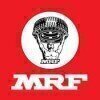Maintenance Electrician
100+ Maintenance Electrician Interview Questions and Answers

Asked in Tata Steel

Q. What is a motor in electrical engineering?
A motor in electrical engineering is a device that converts electrical energy into mechanical energy to produce motion.
Motors are commonly used in various applications such as industrial machinery, household appliances, and vehicles.
There are different types of motors including AC motors, DC motors, and synchronous motors.
Motors consist of a rotor and a stator, with the rotor rotating inside the stator to generate motion.
The speed and torque of a motor can be controlled by ad...read more
Asked in China Geo-Engineering Corporation

Q. Can you identify electrical components and measuring instruments?
Yes, I can identify electrical components and measuring instruments.
I am familiar with various electrical components such as resistors, capacitors, diodes, and transistors.
I can identify measuring instruments like multimeters, oscilloscopes, and voltage testers.
I understand the functions and usage of these components and instruments in electrical systems.
I have practical experience in identifying and troubleshooting electrical components and using measuring instruments.
For ex...read more
Maintenance Electrician Interview Questions and Answers for Freshers
Asked in Jinkushal Industries

Q. What are the different types of starters and their respective specifications?
Different types of starters include DOL starters, star-delta starters, and soft starters.
Direct Online (DOL) starters provide full voltage to the motor at start
Star-delta starters reduce the starting current by initially connecting the motor in star configuration and then switching to delta
Soft starters gradually ramp up the voltage to the motor to reduce mechanical stress
Asked in Jinkushal Industries

Q. What are the steps for checking motor faults and establishing forward and reverse connections?
Steps for checking motor faults and establishing forward and reverse connections
1. Inspect the motor for any physical damage or loose connections
2. Check the power supply to the motor for proper voltage and phase
3. Use a multimeter to test the continuity of the motor windings
4. Verify the motor rotation direction by temporarily connecting it to a power source
5. Ensure the motor is properly grounded and all connections are secure

Asked in Tata Steel

Q. What is a generator in electrical engineering?
A generator in electrical engineering is a device that converts mechanical energy into electrical energy.
Generators use electromagnetic induction to generate electricity
They are commonly used in power plants, wind turbines, and portable generators
Generators can be powered by various sources such as gasoline, diesel, natural gas, or renewable energy sources like solar or wind
They play a crucial role in providing backup power during outages

Asked in Honda

Q. What is the difference between an electrical screwdriver and a mechanical screwdriver?
Electrical screwdrivers use electric power for fastening, while mechanical screwdrivers rely on manual force.
Electrical screwdrivers are powered by batteries or electricity, making them faster and more efficient for repetitive tasks.
Mechanical screwdrivers require manual effort, providing better control for delicate tasks or in tight spaces.
Example: An electrical screwdriver is ideal for assembling furniture quickly, while a mechanical screwdriver is preferred for precision w...read more
Maintenance Electrician Jobs



Asked in GMB Textiles Mills India

Q. How many types of different types department spinning mill
There are typically four main departments in a spinning mill: carding, spinning, winding, and packing.
Carding department prepares the fibers for spinning by aligning them in a parallel arrangement.
Spinning department spins the fibers into yarn.
Winding department winds the yarn onto bobbins or cones.
Packing department packages the finished yarn for distribution.
Some spinning mills may also have additional departments such as dyeing or quality control.

Asked in Honda

Q. What voltage current is used in homes?
Gharo me 220V ka voltage use hota hai, jo ki appliances aur lighting ke liye standard hai.
India me gharon me 220V AC voltage use hota hai.
Is voltage se fans, lights, aur refrigerators chalte hain.
Kuch devices 110V me bhi operate karte hain, lekin unke liye transformer ki zarurat hoti hai.
Voltage ka standard 50Hz frequency ke sath hota hai.
Share interview questions and help millions of jobseekers 🌟

Asked in Kansanshi Mining

Q. Because the copper loss or I2R loss depends on the current and the iron or core loss depends upon the voltage of the transformer
Copper loss or I2R loss depends on current while iron or core loss depends on voltage in transformers.
Copper loss is the power lost due to the resistance of the copper wire in the transformer winding.
Iron or core loss is the power lost due to the magnetic properties of the transformer core.
Higher current leads to higher copper loss while higher voltage leads to higher iron or core loss.
Efficiency of the transformer can be improved by reducing both copper and iron losses.

Asked in Tata Steel

Q. What is AC current in electrical engineering?
AC current is the flow of electric charge that periodically reverses direction, typically found in household appliances and power distribution systems.
AC current alternates direction periodically
Commonly used in household appliances and power distribution systems
AC current is represented by a sine wave
AC current is measured in Hertz (Hz)

Asked in Eastman Auto and Power Limited

Q. 1- How Star delta starter works? 2- Components of starter? 3- Types of starter? 4- What is transformer and how it works?
Star delta starter is a method used to reduce the starting current of induction motors. It involves initially connecting the motor windings in a star configuration and then switching to a delta configuration.
Star delta starter works by initially connecting the motor windings in a star configuration to reduce the starting current, and then switching to a delta configuration for normal operation.
Components of a starter typically include contactors, overload relays, and a timer ...read more

Asked in Tata Steel

Q. What is DC current in electrical engineering?
DC current in electrical engineering is the flow of electric charge in one direction only.
DC stands for direct current, which is a constant flow of electric charge in one direction
DC current is typically produced by batteries, solar cells, and rectifiers
DC current is used in many electronic devices such as laptops, cell phones, and LED lights

Asked in Tata Steel

Q. What is electricity in electrical engineering
Electricity in electrical engineering refers to the flow of electric charge through a conductor.
Electricity is the movement of electrons along a path called a conductor
It is measured in units of voltage, current, and resistance
Electricity can be generated by sources such as batteries, generators, and solar panels

Asked in Kamal Ced Solution

Q. What is the capacity of the hot water generator and chiller plant?
The capacity of the hot water generator and chiller plant depends on the specific requirements of the facility.
The capacity of the hot water generator is determined by factors such as the size of the building, the number of occupants, and the desired hot water temperature.
The capacity of the chiller plant is determined by factors such as the cooling load of the building, the climate conditions, and the desired indoor temperature.
Calculations and engineering analysis are typic...read more

Asked in Sietz Technologies

Q. What types of machines have you worked on?
I have worked on various types of machines including industrial equipment, manufacturing machinery, and electrical systems.
Industrial equipment such as pumps, compressors, and generators
Manufacturing machinery like conveyors, mixers, and packaging machines
Electrical systems including switchgear, control panels, and motor starters

Asked in Jindal Steel and Power

Q. What is the difference between an MCB and a DOL starter?
MCB and DOL Starter are both electrical devices used for protection and control, but they have different applications.
MCB stands for Miniature Circuit Breaker, while DOL Starter stands for Direct-On-Line Starter.
MCB is used for protecting electrical circuits from overcurrents and short circuits, while DOL Starter is used for starting and stopping motors.
MCB is a compact device that can be manually reset after tripping, while DOL Starter is a larger device with additional comp...read more

Asked in JSW Steel

Q. What is a DOL starter, and how does it work?
A DOL starter is a direct-on-line starter used in electrical systems to start and stop motors.
DOL stands for Direct-On-Line.
It is the simplest and most common type of motor starter.
The DOL starter directly connects the motor to the power supply, providing full voltage at start.
It consists of a contactor, overload relay, and start and stop buttons.
When the start button is pressed, the contactor closes and the motor starts.
The overload relay protects the motor from excessive cu...read more
Asked in GMB Textiles Mills India

Q. What type of transformer is used in a spinning mill?
Transformers used in spinning mills are typically distribution transformers.
Distribution transformers are commonly used in spinning mills to step down the voltage for various machinery.
These transformers are usually oil-filled and have a power rating suitable for the specific requirements of the mill.
The transformers help in distributing the electricity efficiently throughout the mill.
Examples of distribution transformer manufacturers include ABB, Siemens, and Schneider Elect...read more
Asked in Avolt Mobility Solutions

Q. What should be the resistance difference between CAN1 and CAN2?
The difference between the resistance can1 and can2 is based on the specific components and wiring configurations in the electrical system.
The resistance can1 and can2 may differ due to variations in wire gauge, length, material, or temperature.
Different components connected to can1 and can2 may also contribute to the resistance difference.
The resistance can be calculated using Ohm's Law (R = V/I) where V is voltage and I is current.
Regular maintenance and testing can help id...read more

Asked in Bansal Wire Industries

Q. What is the difference between OCV and ACV?
OCV stands for Open Circuit Voltage and ACV stands for Alternating Current Voltage.
OCV is the voltage measured when there is no load connected to a circuit.
ACV is the voltage of an alternating current, which periodically changes direction.
OCV is typically measured using a voltmeter, while ACV is measured using an oscilloscope.
OCV is commonly used to determine the state of charge of a battery, while ACV is used to measure the voltage in electrical systems.
Examples of OCV inclu...read more
Asked in Kansanshi Mining

Q. Because the losses occuring in the transformer are independent of power factor
True, losses in transformers are independent of power factor.
Transformer losses occur due to core losses and copper losses
Core losses are constant and independent of load power factor
Copper losses vary with load but are also independent of power factor
Power factor affects only the apparent power and not the losses

Asked in Godrej Interio

Q. What is the main function of a multimeter?
A multimeter is a versatile tool used to measure electrical properties such as voltage, current, and resistance in electrical circuits.
Measures voltage: Used to measure the electrical potential difference between two points in a circuit.
Measures current: Used to measure the flow of electric charge in a circuit.
Measures resistance: Used to measure the opposition to the flow of electric current in a circuit.
Diagnosing electrical issues: Helps in troubleshooting and identifying ...read more

Asked in Godrej Interio

Q. How do you test a three-phase induction motor?
To test a three-phase induction motor, you can use a multimeter to check for continuity, insulation resistance, and voltage imbalance.
Use a multimeter to check for continuity between the motor windings and the motor frame
Measure the insulation resistance between each winding and the motor frame to ensure there are no shorts
Check for voltage imbalance by measuring the voltage across each phase of the motor

Asked in AM Infoweb

Q. What is the process of troubleshooting?
Troubleshooting is the process of identifying and resolving issues in electrical systems by systematically analyzing and testing components.
Identify the problem by gathering information from the user or observing the issue
Create a hypothesis of what might be causing the problem
Test the hypothesis by checking components, connections, and circuits
Fix the issue by replacing faulty parts or making adjustments
Verify the solution by testing the system to ensure the problem is resol...read more

Asked in International Automotive Components

Q. Control diagram of star delta starter and control diagram of reverse forward starer .
Control diagrams for star delta starter and reverse forward starter.
Star delta starter: used for starting induction motors, reduces starting current by first connecting the motor in star configuration and then switching to delta configuration.
Reverse forward starter: used for reversing the direction of rotation of a motor, achieved by changing the phase sequence of the motor windings.
Control diagrams typically include power supply connections, contactors, overload relays, and...read more

Asked in Suzlon Group

Q. What is the difference between AC and DC?
AC and DC are two types of electrical current. AC stands for alternating current and DC stands for direct current.
AC is the type of current commonly used in homes and businesses, while DC is used in batteries and electronic devices.
AC current periodically changes direction, while DC current flows in one direction.
AC current can be easily converted to different voltages using transformers, while DC current requires a power supply or converter to change voltage.
AC current is ge...read more

Q. What is the difference between three-phase and single-phase power?
Three-phase and single-phase electrical systems differ in the number of phases and voltage supply.
Three-phase systems have three separate voltage waveforms, while single-phase systems have only one.
Three-phase systems are typically used for high-power applications, while single-phase systems are used for lower power loads.
Three-phase systems provide a more balanced and efficient power distribution compared to single-phase systems.
Examples of three-phase applications include i...read more
Asked in GMB Textiles Mills India

Q. How many types of yarn are used in a spinning mill?
There are various types of yarn used in spinning mills, including cotton, polyester, acrylic, and wool.
Cotton yarn is commonly used for its softness and breathability.
Polyester yarn is known for its durability and resistance to wrinkles.
Acrylic yarn is often used as a cheaper alternative to wool.
Wool yarn is prized for its warmth and natural properties.
Asked in GMB Textiles Mills India

Q. Which type yarn process spinning mill
The type of yarn process in a spinning mill depends on the type of fibers being used and the desired end product.
Different types of yarn processes include ring spinning, open-end spinning, and air jet spinning.
Ring spinning is the most common method and produces high-quality yarn suitable for a wide range of applications.
Open-end spinning is faster and more cost-effective but produces lower-quality yarn.
Air jet spinning is a newer technology that produces yarn with unique pro...read more

Asked in Bansal Wire Industries

Q. What are the differences between AC motors and DC motors?
AC motors and DC motors differ in their power source and construction.
AC motors run on alternating current, while DC motors run on direct current.
AC motors use an alternating magnetic field to generate torque, while DC motors use a permanent magnet or electromagnet.
AC motors are typically more efficient and require less maintenance than DC motors.
AC motors are commonly used in household appliances, industrial machinery, and HVAC systems, while DC motors are often found in bat...read more
Interview Questions of Similar Designations
Interview Experiences of Popular Companies








Reviews
Interviews
Salaries
Users

















